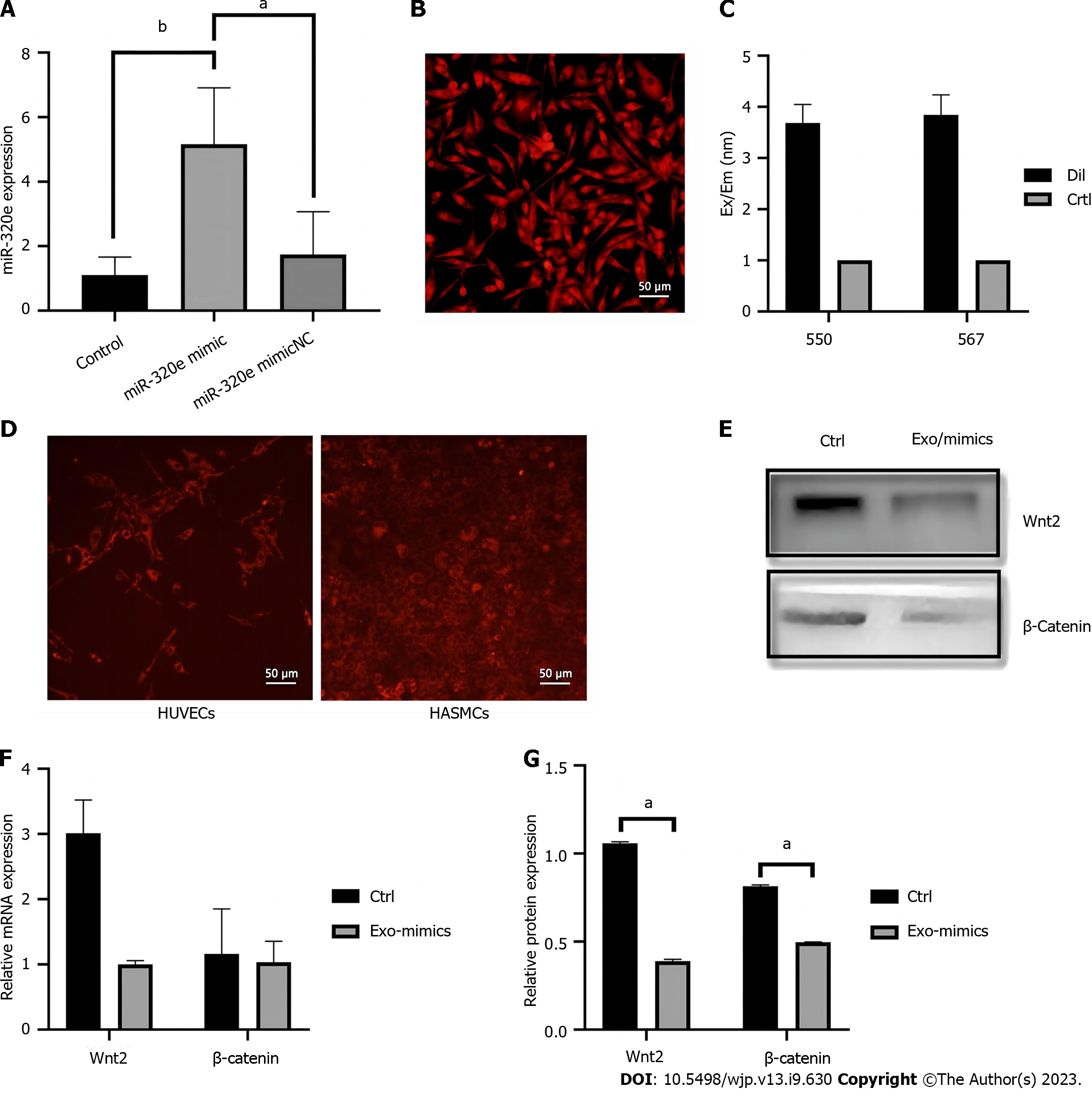Copyright
©The Author(s) 2023.
World J Psychiatry. Sep 19, 2023; 13(9): 630-644
Published online Sep 19, 2023. doi: 10.5498/wjp.v13.i9.630
Published online Sep 19, 2023. doi: 10.5498/wjp.v13.i9.630
Figure 5 The expression of miR-320e in the exosomes secreted by the miR-320e mimic-transfected cells was significantly higher than that in the mimic NC group and the blank control.
A: HUVECs were transfected using miR-320e mimics and the expression of miR-320e was detected. B: Lipid membrane of HUVECs marked by DiI; C: Microplate reader analysis showed that exosomes were also marked by DiI; D: As shown by using marked exosomes harvested from HUVECs and cocultured with HASMCs, HUVECs also showed red fluorescence; E-G: Western blotting and PCR showed that Wnt2 and β-catenin expression in the Exo-mimic group decreased compared to that of the control group. HUVECs: Human umbilical vein endothelial cells; HASMCs: Human aortic vascular smooth muscle cells; PCR: Polymerase chain reaction. aP < 0.05, bP < 0.01.
- Citation: Wang Z, Li XN, Yang SN, Wang Y, Gao KJ, Han B, Ma AJ. Exosomal miR-320e through wnt2targeted inhibition of the Wnt/β-catenin pathway allevisate cerebral small vessel disease and cognitive impairment. World J Psychiatry 2023; 13(9): 630-644
- URL: https://www.wjgnet.com/2220-3206/full/v13/i9/630.htm
- DOI: https://dx.doi.org/10.5498/wjp.v13.i9.630









